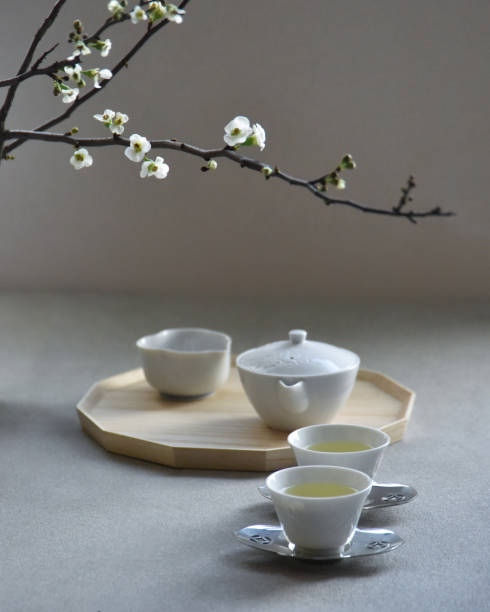Welcome to my article about “Sencha Green Tea Caffeine Content”. Sencha green tea, a fundamental part of Japanese culture, has a long history and offers a delightful experience that has fascinated tea lovers for many years. Initially from Japan, Sencha is not just a drink but a tradition deeply ingrained in Japanese society. This type of green tea is renowned for its unique production process, distinct flavor, and significant health benefits, making it of great interest to tea enthusiasts and health-conscious individuals.
Unlike other green teas, Sencha undergoes a specific steaming process that distinguishes it. This method maintains the leaves’ vibrant green color and enhances its fresh, grassy flavor, setting it apart from other types such as Matcha or Gyokuro. The leaves are meticulously picked, steamed, rolled, and dried, a technique refined over generations. This careful process ensures top quality and preserves the tea’s powerful antioxidants and nutrients, providing a delightful and healthy beverage.
It is essential for those who include it in their daily routine to understand the caffeine content in Sencha. While green tea is generally known for its moderate caffeine levels, Sencha’s caffeine content can vary based on harvest time and preparation methods. Sencha provides an excellent option for people seeking a mild energy increase without the nervousness commonly linked to coffee. Its caffeine release is gradual and prolonged, supporting alertness and focus without sudden peaks and crashes.

Moreover, Sencha contains caffeine and L-theanine, an amino acid that encourages relaxation without causing drowsiness. This distinctive combination enhances cognitive function, uplifts mood, and fosters a calm yet attentive state, making Sencha an ideal choice for work and relaxation. Understanding these nuances can assist individuals sensitive to caffeine or those aiming to manage their intake in tailoring their consumption to align with their health and lifestyle goals.
Sencha green tea offers a delightful journey through tradition, flavor, and wellness. Its historical significance in Japan, distinct production process, and balanced caffeine content make it a captivating subject worth exploring. Whether you are an experienced tea drinker or new to the world of green tea, Sencha provides an opportunity to enjoy a beverage that is as enriching to the mind as it is to the palate. Embracing Sencha means appreciating a timeless tradition and harnessing its health benefits while savoring a cup of nature’s finest offerings.
Unveiling the Caffeine: How Much Does Sencha Green Tea Contain?
Revealing the amount of caffeine in Sencha green tea shows an exciting equilibrium between energy and relaxation. Typically, a cup of Sencha has about 20-30 milligrams of caffeine, significantly lower than a regular cup of coffee, which can have 95 to 200 milligrams per serving. Sencha provides a gentle boost in energy, making it an excellent option for those looking to reduce their coffee intake while still enjoying a morning or afternoon energy lift.
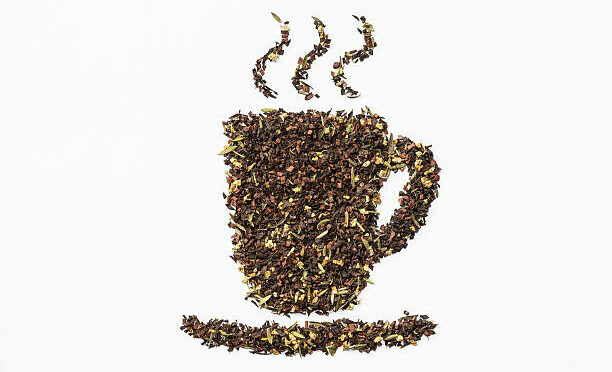
Sencha’s caffeine content falls in the middle range compared to other teas. For instance, black tea usually contains around 40-70 milligrams of caffeine per cup, while Matcha green tea can have up to 70 milligrams. On the other hand, white tea typically has the least caffeine, averaging about 15-30 milligrams per cup. With its moderate caffeine content, Sencha is a versatile choice for tea enthusiasts who appreciate this beverage’s stimulating and soothing effects.
Various factors influence the caffeine levels in Sencha green tea. One of the main factors is the time of harvest. Sencha leaves picked during the first flush in early spring tend to have higher caffeine content than those harvested later in the year. This is because the tea plants, emerging from winter dormancy, concentrate more caffeine in the new leaves to protect them from pests. Additionally, the processing method plays a crucial role. The steaming process used in Sencha production helps maintain the caffeine and other beneficial compounds, resulting in a potent yet balanced beverage.
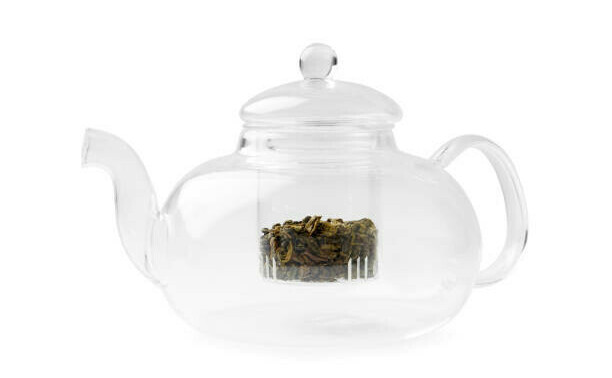
The brewing time and temperature for Sencha play crucial roles in determining the caffeine content in a cup. Steeping the tea for a more extended period and using hotter water can extract higher amounts of caffeine from the leaves, leading to a more potent brew. For those who prefer a milder cup, reducing the steeping time or using slightly cooler water can help manage the caffeine intake.
In summary, understanding the caffeine content in Sencha green tea offers valuable insights for tea drinkers seeking a balanced and healthful beverage. With its moderate caffeine levels, Sencha provides a delightful alternative to coffee and other teas, allowing individuals to enjoy a gentle, sustained energy boost alongside traditional Japanese tea’s numerous health benefits.
Health Implications: The Good and the Cautious
Sencha green tea offers not just a delightful drink but also various health advantages, all thanks to its moderate caffeine content. Moderate caffeine consumption can improve cognitive function, enhance mood, and boost alertness. Alongside caffeine, Sencha contains L-theanine, an amino acid that encourages relaxation and diminishes stress. Because of this blend, Sencha provides a gentle energy lift without the usual jittery effects associated with coffee.

One of Sencha’s main health perks is its rich antioxidant content, especially catechins like EGCG (epigallocatechin gallate). Antioxidants aid in fighting free radicals, lowering inflammation, and lessening the chance of developing chronic conditions such as heart disease and cancer. Regular Sencha consumption can also assist in managing weight, as it might increase metabolism and improve fat burning. Furthermore, combining L-theanine and caffeine can enhance brain function, improving memory, attention, and reaction time.
While the benefits are plentiful, it’s crucial to comprehend the recommended caffeine limit to prevent potential side effects. The FDA advises that for most adults, it is recommended to restrict daily caffeine consumption to 400 milligrams, roughly equivalent to about 13 servings of Sencha. Nevertheless, individual tolerance can differ, and surpassing this amount may lead to adverse effects like insomnia, anxiety, and elevated heart rate. For those sensitive to caffeine, even smaller amounts may cause discomfort, so it’s essential to carefully monitor intake.

Different populations require specific considerations. For example, pregnant women should restrict their caffeine intake to 200 milligrams per day, about 6-7 cups of Sencha, to avoid potential risks to the fetus, such as low birth weight and preterm birth. Individuals with specific health conditions, like hypertension or heart arrhythmias, should also be cautious with their caffeine consumption, as it can worsen these conditions. Remember to seek guidance from your healthcare professional before significantly changing your caffeine consumption.
Sencha green tea provides a delightful blend of taste and health advantages, making it an excellent choice for individuals seeking a comprehensive way to consume caffeine. By understanding the potential benefits and being mindful of intake limits, tea lovers can incorporate Sencha into a healthy lifestyle tailored to their needs and health considerations.
Brewing the Perfect Cup: Tips to Control Caffeine Content
Creating a flawless brew of Sencha green tea involves blending artistic expertise with precise scientific measurements, particularly in regulating caffeine levels. The amount of caffeine in your tea can be significantly impacted by the brewing duration and the temperature of the water. Understanding these variables can assist you in customizing your tea to match your requirements and preferences.
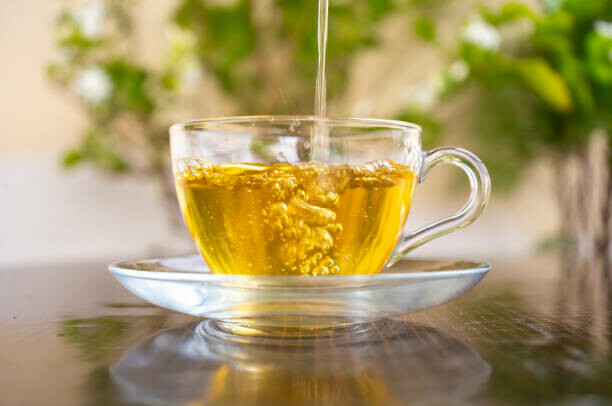
The longer you steep your Sencha, the higher the caffeine content will be extracted from the leaves. For individuals who desire a more potent caffeine boost, a more extended brewing period, usually three to five minutes, can heighten the caffeine levels. Conversely, if you prefer to relish the flavors of Sencha with a lower caffeine content, a briefer steeping time of one to two minutes is optimal. This allows you to enjoy the delicate taste of the tea without consuming excessive caffeine.
The temperature of the water is also crucial in extracting caffeine. Hotter water, roughly between 175°F and 185°F (80°C to 85°C), will extract more caffeine from the tea leaves. Using hotter water can achieve this effect if you seek a robust and stimulating cup. On the other hand, if you prefer a milder brew, using slightly cooler water, around 160°F (70°C), can decrease the caffeine content while still delivering a satisfying taste experience.
The quality and provenance of your Sencha tea are equally significant factors influencing caffeine content and overall flavor. Premium Sencha, often sourced from esteemed tea plantations in Japan, typically contains a well-balanced level of caffeine and provides a superior flavor profile. These teas are painstakingly processed to maintain their natural components, including caffeine, antioxidants, and amino acids. Investing in premium Sencha guarantees a more intricate, full-bodied taste and more predictable caffeine levels.
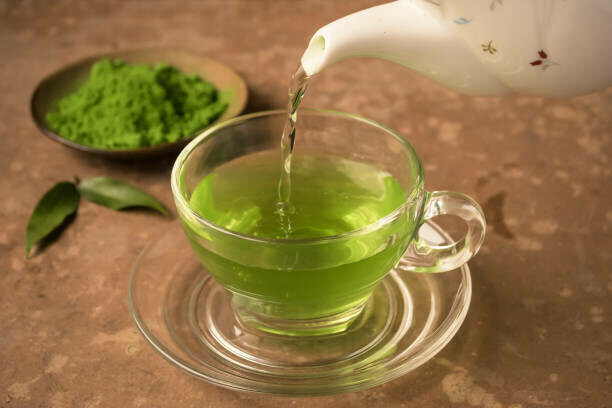
Incorporating Sencha with other herbs or teas can be a practical approach for further adjusting the caffeine levels. Mixing with low-caffeine teas like white tea can create a well-balanced cup with reduced caffeine. Alternatively, blending Sencha with a small amount of matcha powder to boost caffeine levels can intensify the caffeine content while enhancing the flavor.
Ultimately, brewing the perfect cup of Sencha involves experimentation and discovering the ideal equilibrium that complements your taste and caffeine preferences. By paying attention to brewing time, water temperature, and the quality of your tea leaves, you can create a tailored tea experience that is not only delightful but also perfectly attuned to your lifestyle.
Incorporating Sencha Green Tea into Your Routine Mindfully
Ingraining Sencha green tea into your everyday schedule can be a pleasant and beneficial experience, incredibly, when approached thoughtfully. Sencha presents a distinctive blend of taste and moderate caffeine, making it a versatile option for different times of the day. You can savor this traditional Japanese tea without compromising your well-being by being mindful of your caffeine consumption.

One innovative approach to enjoying Sencha is to commence your day with a warm cup to awaken your senses. The moderate caffeine level provides a smooth, consistent energy lift without the uneasiness associated with coffee. Another option is to try cold-brewing Sencha for a refreshing iced tea choice. This technique often yields a milder flavor and slightly reduced caffeine content, perfect for a rejuvenating beverage during the middle of the day. For a creative variation, mix Sencha with fruits like lemon or berries to produce a delectable and nourishing iced tea that is both hydrating and invigorating.
The timing of your Sencha consumption is crucial for maintaining a well-rounded lifestyle. Drinking Sencha in the morning or early afternoon is ideal, as the caffeine can heighten alertness and concentration during the day. However, consuming it too late in the day might disrupt sleep patterns. To avoid this, consider switching to a caffeine-free herbal tea in the evening, enabling your body to naturally wind down before bedtime.
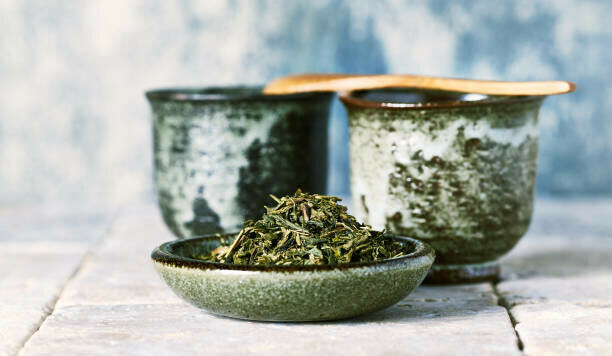
Exercising mindful consumption also involves balancing your caffeine intake from various sources. Considering the combined impact of caffeine from Sencha, coffee, and other caffeinated drinks you may consume throughout the day is essential. Keeping a mental track or using a journal to monitor your caffeine intake can help ensure you remain within recommended limits, promoting better overall health and preventing potential side effects such as insomnia or anxiety.
Incorporating Sencha green tea into your everyday routine provides a flavorful beverage and gives you a chance to practice mindfulness. By paying attention to how and when you consume it, you can maximize its benefits while maintaining a healthy equilibrium. Whether you indulge in a hot cup in the morning or a cold brew in the afternoon or find inventive ways to incorporate it into your diet, Sencha can be a splendid addition to a mindful and balanced lifestyle.
Thank you for reading my article about “Sencha Green Tea Caffeine Content”, and I would love to receive your comments down below, in case of any.

